Blue Cohosh
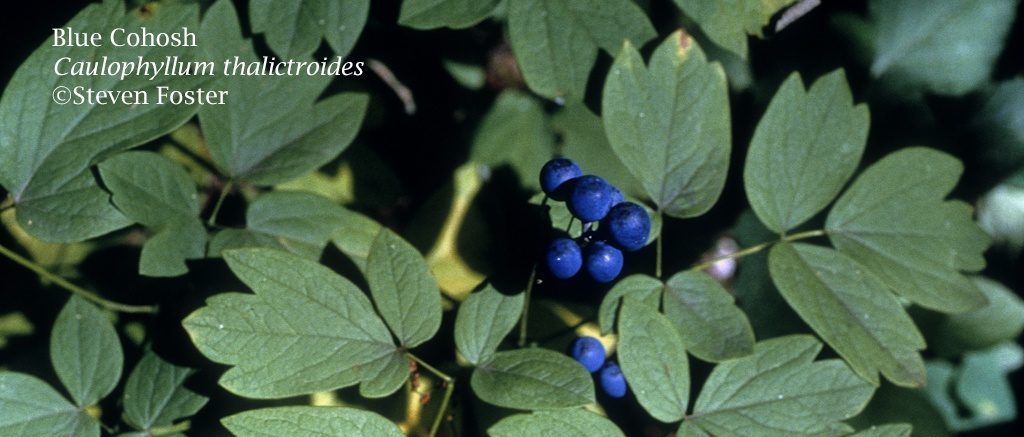
Blue Cohosh (Caulophyllum thalictroides)
Caulophyllum thalictroides, Blue Cohosh, has no relation to black cohosh. “Shy of people and traffic,” Richo Cech writes in Planting the Future: Saving our Medicinal Herbs, “blue cohosh inhabits the low ravines and hollows of northern Appalachia. When conditions are ideal, this plant can spread in large thigh-high patches that shade the deep, loamy soil of the forest with soft foliage.”[1] Blue cohosh is one of the earliest plants to emerge in spring. The stalks unfurl into purple-green flowers that ripen into brilliant blue fruit that last into fall.[2]
Blue Cohosh Gallery by Steven Foster
Click image to enlarge
Blue Cohosh Uses
Foster and Jim Duke write in the Peterson Guide to Medicinal Plants and Herbs that “Native Americans used the root tea to aid in labor, treat profuse menstruation, abdominal cramps, urinary tract infections, lung ailments, and fevers. The root is held in esteem for use in menstrual disorders and an aid in labor. The root extracts have estrogenic activity, are antispasmodic and anti-inflammatory. There is no doubt that blue cohosh is a powerful herb, best kept in the hands of a knowledgeable practitioner. It should be avoided during pregnancy except under medical advice. Generally, it is used by practitioners only after labor has begun. This herb should be used with caution.”[3]
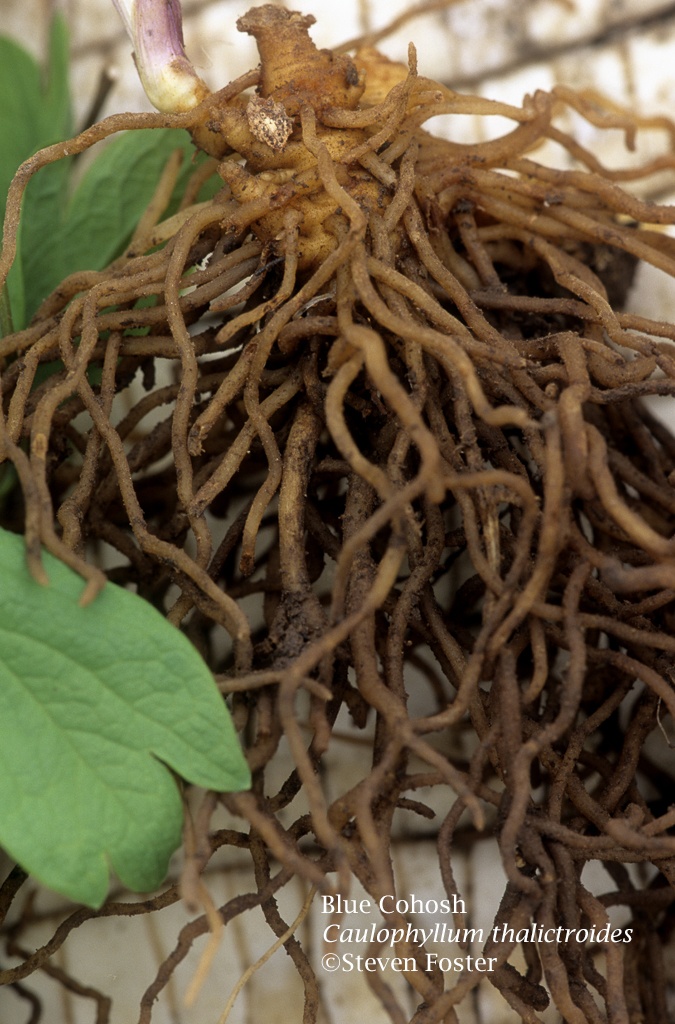
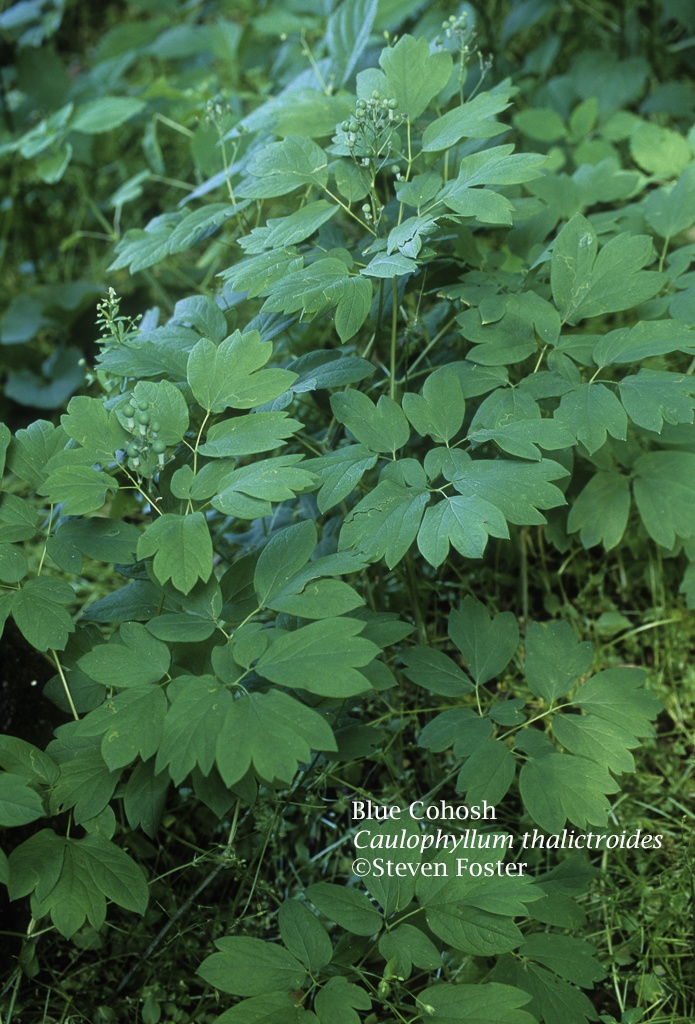
Blue Cohosh Sustainability
With only 2% of the trade volume of blue cohosh coming from cultivated sources, sustainable harvest practices are critical for the plant’s preservation. Prices paid to harvesters historically range from $0.50-$6.25 per pound wholesale [4]. Such low prices make it impossible for cultivation to be profitable for blue cohosh forest farmers. Fair wage prices paid by conscious consumers is an important step towards a sustainable supply chain. Watch the video below to meet a forest farmer who is sustainably stewarding blue cohosh at a fair wage.
Forest Farming Blue Cohosh
This 3-minute SHP video explores practices to sustainably propagate blue cohosh in the Appalachian forests as part of the Appalachian Harvest Herb Hub’s Forest Farming program.
Dig Deeper
- The Blue Cohosh page on the United Plant Savers At-Risk List.
- For a more detailed overview of the history of blue cohosh’s medicinal uses, see Foster’s chapter on blue cohosh in Herbal Renaissance: Growing, Using and Understanding Herbs in the Modern World.[2].
Go to Forest Botanicals Week
References
[1] Cech R. “Blue Cohosh (Caulophyllum thalictroides),” in Gladstar R, Hirsch P., eds. Planting the Future: Saving Our Medicinal Herbs.. Rochester, VT: Healing Arts Press, 2000;78-83.
[2] Foster S. 1993. Herbal Renaissance: Growing, Using and Understanding Herbs in the Modern World. Salt Lake City: Gibbs-Smith Publisher, 1993;48-50.
[3] Foster S, Duke JA. Peterson Field Guide to Medicinal Plants and Herbs: Eastern and Central North America. 3rd ed. New York: Houghton Mifflin, Co, 2014;275-76.
[4] Chittum, H., Burkhart, E., Munsell and Krugerm S. “Investing in Forests and Communities: A Pathway to a Sustainable Supply of Forest Herbs in the Eastern United States,” HerbalGram (2019; 124:60-76).

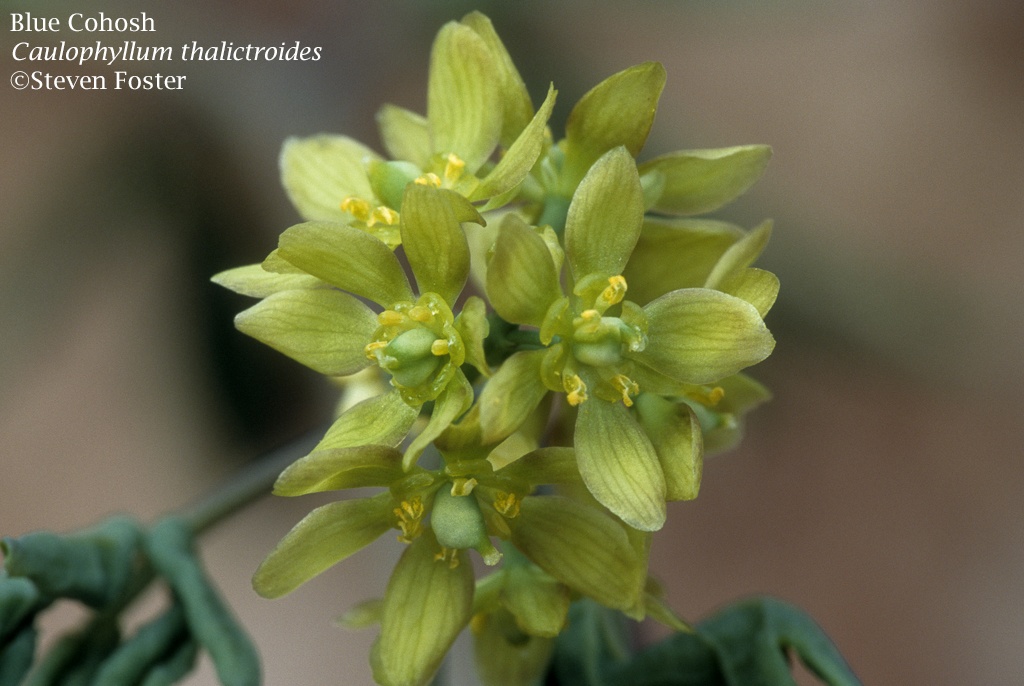
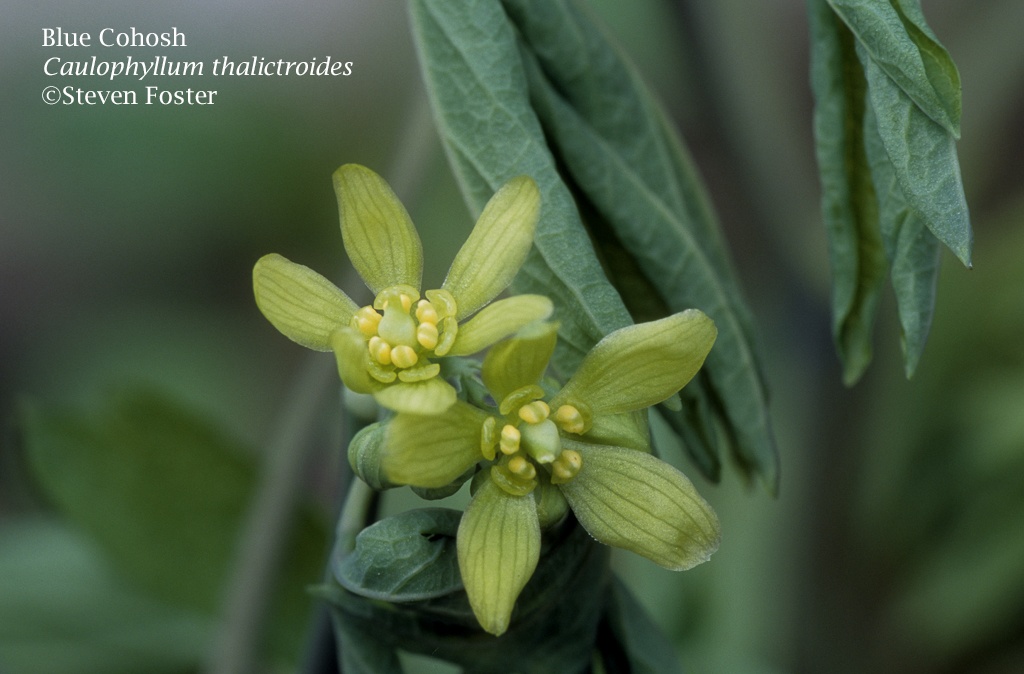
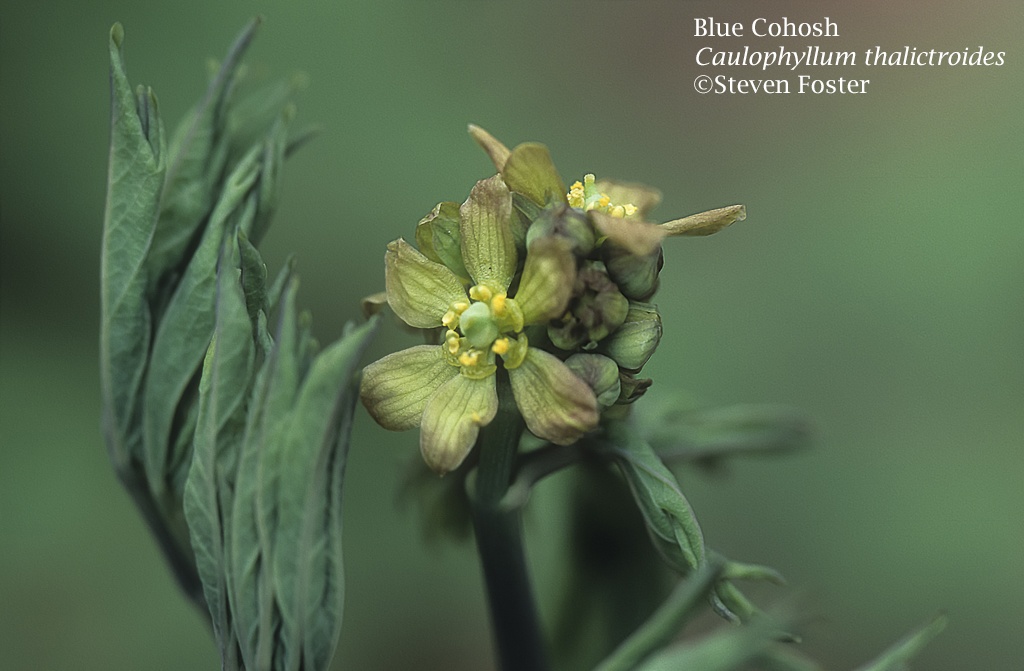
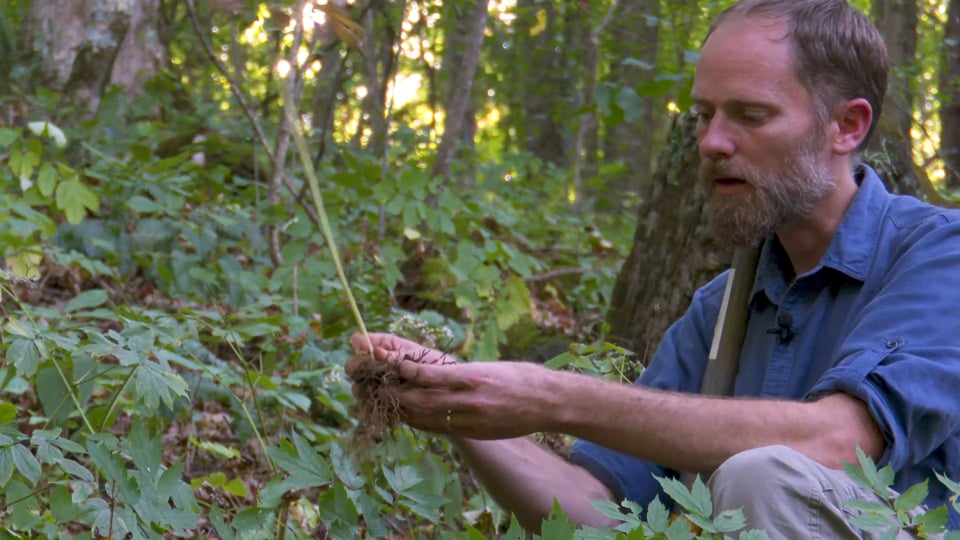
Comments